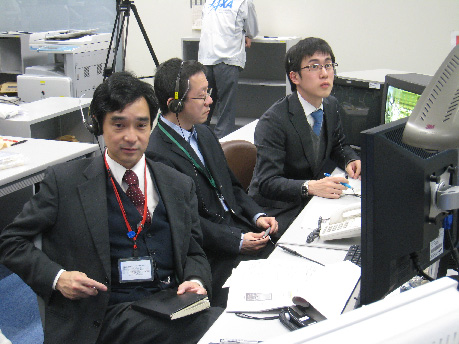This is an archive of information released in the past.
Disclaimer: It may contain broken links or outdated information. Some parts may not function in current web browsers.
*Visit https://humans-in-space.jaxa.jp/en/ for the latest information.

Experiment
- News
- Kibo Utilization Strategy
- Kibo Utilization Plan
- List of JAXA's Utilization Themes
- Experiment Facilities
- Space Environment Utilization
- Archive
Microbe-II Performed on board Kibo
* All times are Japan Standard Time (JST)
Microbial Dynamics in International Space Station- Part II (Microbe-II)* began on board Kibo.
*Principal Investigator (PI): Koichi Makimura, Associate Professor of Teikyo University Institute of Medical Mycology / Masao Nasu, Professor of Graduate School and School of Pharmaceutical Sciences, Osaka University
Various microbial organisms have been identified in the International Space Station (ISS).
The Microbe experiment tries to identify type of microbes in Kibo by long-term sample collections. The experiment evaluates effects of those microbial organisms on the health of crew members and equipment aboard Kibo, based on unique microbial environment of the ISS, which is characterized by microgravity and confined environment.
The Microbe experiment consists of three flight missions, Microbe-I, II and III. The Microbe-I was performed from August through September, 2009. In the Microbe-II, three sample collection sessions (one collection session per day) will be performed. The first sample collection was performed at 6:30 p.m. on October 29, 2010. After the second and third sample collections are completed, the collected samples will be stored in the station's freezer MELFI until recovery to the ground. The samples will be returned to the ground aboard the space shuttle Discovery (STS-133). After the samples are returned to Japan, the team will perform various analyses.
Three sample collection methods were prepared for the experiment. Three types of sample collection kit, including fungi (molds and yeasts) cultivation sheet, adhesive sheet, and swab (polyester swab), will be used. The fungi cultivation sheet is designed to cultivate fungi samples collected from the surface of the equipment on board Kibo. The cultivated samples will be documented (photographed) and stored in the station's freezer MELFI until recovery to the ground.
Special Message from Koichi Makimura (PI)
The experiment will monitor microbial environment in the Kibo Pressurized Module (PM) at 880 days after Kibo operations begins. Sample collections of the Microbe-II are scheduled at the point the elapsed time of the Kibo operations is twice as long as the elapsed time at the Microbe-I sample collections. During the 14 months, ISS astronauts have worked, slept and performed science experiments in the Kibo PM. What epsodes have changed the microbial environemnt inside the Kibo. I am interested to hearing "voices" of microbes "currently" living aboard Kibo.
Special Message from Masao Nasu (PI)
The Microbe-II sample collection will use an adhesive sheet specially developed for this experiment. The monitoring of the microbial environment inside the Kibo module is attracting attentions from scientists around the world. We will continue Kibo microbial environment monitoring and will actively share the collected data to the world, hoping that our experiment will offer basic information required to study the microbial environment inside future manned spacecrafts.

Microbe-II team members monitoring the sample collection session from the UOA (From left, Makimura (PI, Teikyo University), Yamaguchi (Osaka University), and Ichijyo (Osaka University))
*All times are Japan Standard Time (JST)
| Copyright 2007 Japan Aerospace Exploration Agency | Site Policy |